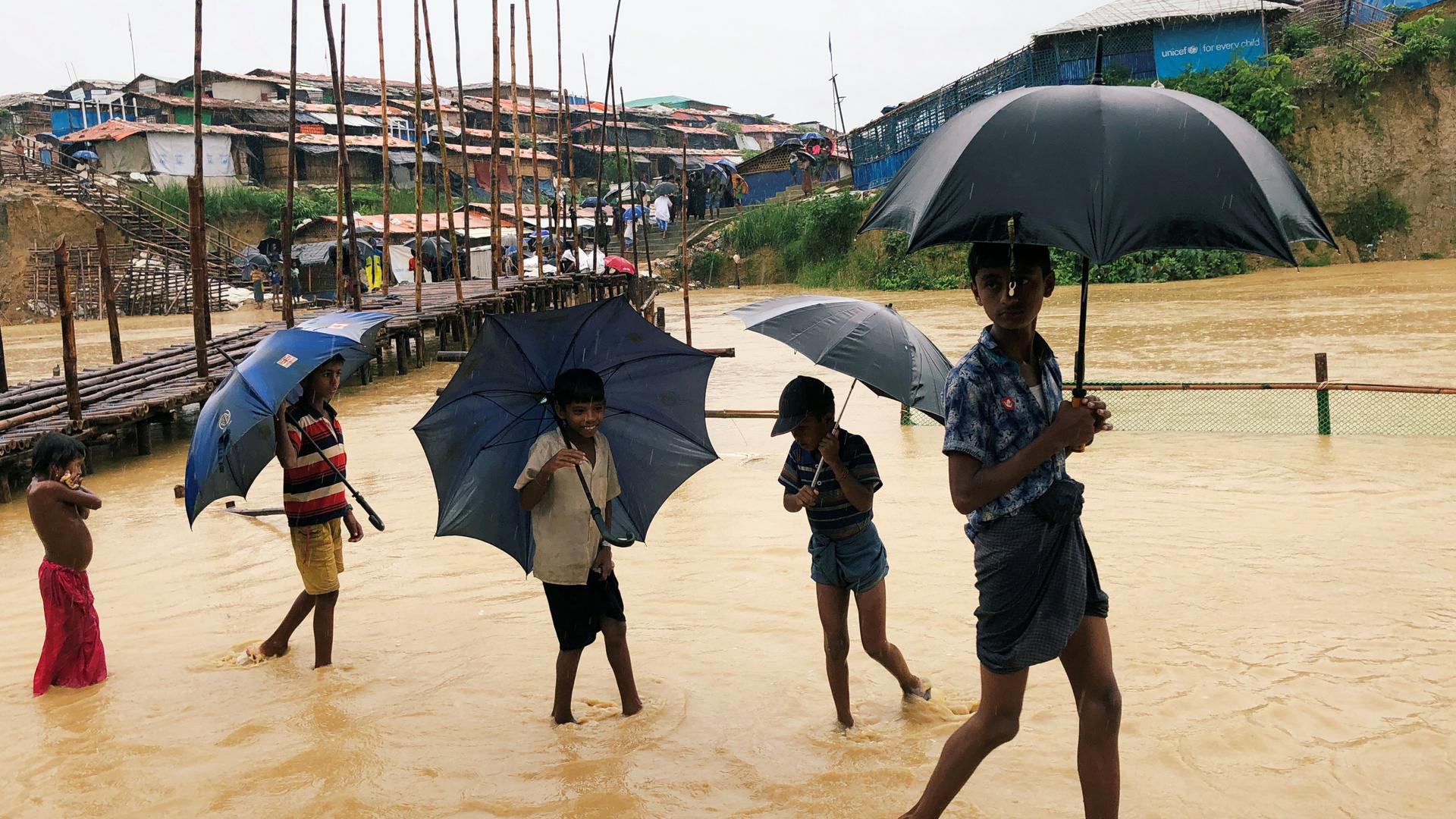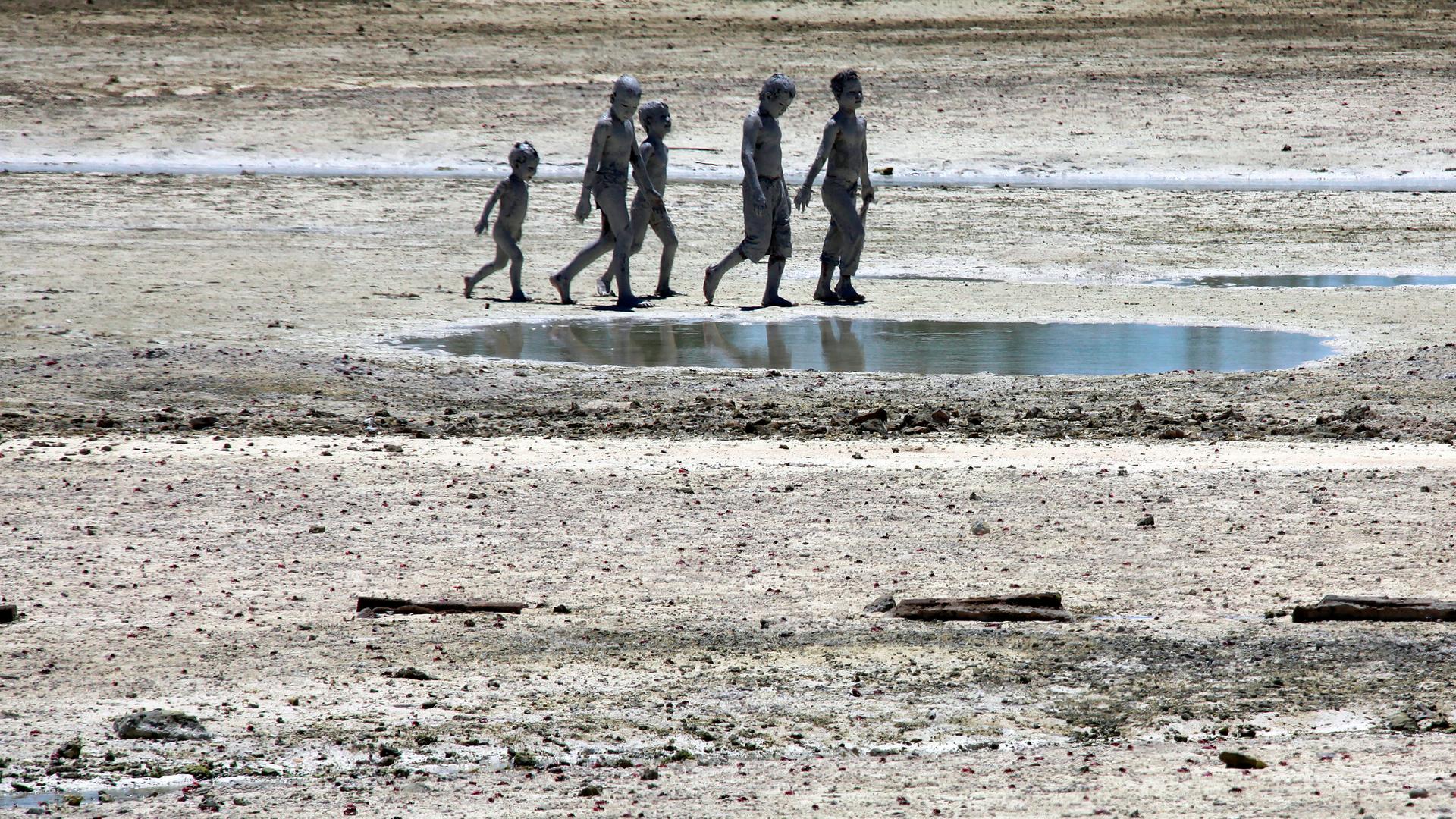UN asylum case opens the door to protections for climate refugees
Young boys covered in reef mud walk toward their homes in the village of Ambo, located on South Tarawa, Kiribati, South Pacific, May 25, 2013.
The United Nations (UN) does not formally recognize climate change refugees, but that position is beginning to shift, following a case brought to the UN by an asylum seeker from Kiribati, an island in the South Pacific.
Ioane Teitiota applied for asylum in New Zealand, claiming that his island home was flooding due to sea level rise and he could no longer live there. New Zealand denied his request, and the UN agreed with that decision because, they said, Teitiota was not in imminent danger.
But the case did crack open the door for future asylum-seekers for whom threats of climate change are more acute, according to Andrew Harper, Special Adviser on Climate Change to the UN High Commissioner for Refugees (UNHCR).
Related: Understanding the human side of climate change relocation
In the past, national asylum authorities could dismiss an asylum case if the asylum-seeker claimed they were forced to leave their home country for environmental reasons, Harper explained. This recent case sets a new precedent because it recognizes that an imminent, life-threatening risk could arise as a consequence of climate change. As a result, national asylum authorities will now have to undertake an individual determination of each environmental claim.
“While the Human Rights Committee’s decisions are not binding, they are expected to be taken in good faith,” Harper said. “And in relation to the 1951 Refugee Convention, such precedents will inform the guidance that we provide to states. We’ve already been contacted by a number of states who are looking at what will be the implications of this.”
Related: Immigration attorneys warn against using the term ‘climate refugee’
Recent research suggests that people are three times more likely to be displaced by natural disasters than by conflict or war. Most of these displacements occur internally, within the borders of a country, but as climate change worsens, many displaced people may be forced to seek entrance to another country.

To prepare for this, Harper said, UNHRC’s objective is to invest much more in mitigating the impacts of climate change and helping communities “adapt to an increasingly hostile future.”
“No person generally wishes to leave their community,” Harper said. “Certainly, people in the South Pacific don’t want to see their islands disappear under the waves. People in many parts of Africa do not want to leave their farms. They want to continue the lives which they’ve had for generations. They want their children to be going to school, they want to be provided with health care.”
Related: Climate change is the overlooked driver of Central American migration
The international community has an obligation “to provide the support to particularly vulnerable states and populations to mitigate this horrible catastrophe, which many of them have not really had a contribution to,” he continued. “So, rather than states being so concerned about populations coming to their borders, what we should be doing is trying to mitigate the need for people to leave in the first place.”
Some African states are doing the most to provide protection for displaced populations, Harper noted.
“They recognize that people who have had to flee because of the effects of climate change and disasters — due to no fault of their own — are in need of protection,” he said. “It’s really up to the wider international community to be as progressive as some of these smaller and, let’s say, more fragile states who provide a level of protection, generosity and dignity which we could all learn from.”
This article is based on an interview by Bobby Bascomb that aired on Living on Earth from PRX.
Our coverage reaches millions each week, but only a small fraction of listeners contribute to sustain our program. We still need 224 more people to donate $100 or $10/monthly to unlock our $67,000 match. Will you help us get there today?
